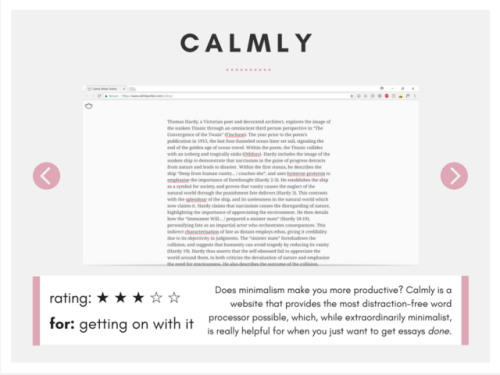Earthquakedeer - サビーナです。


More Posts from Earthquakedeer and Others


16 sep ‘17 // some bio notes from last week
Intersect city by kiyoshimachine
english: one million
japanese: :)
english: oh boy
japanese: one hundred ten thousands

行きます|つもり|ようと思う Hey guys, it’s been a while since I’ve made a post on this blog! I’ve been so busy with university and then as soon as my last exam was over I traveled back home to see my family! I finally have some time to myself so I thought I’d make a new post! This is all about how to say doing something in Japanese. This post won’t go into too much depth regarding these sentence patterns, so feel free to look them up for more information on how to use them! 行きます・Going to do: To say, “I’m going to__” in Japanese, you can follow this sentence pattern. Sentence pattern = subject+を+verb stem (ます form without the ます) +に+行きます・行く。 e.g. 何をしますか? What are you doing? 映画を見に行きます。 Going to see a movie. つもり・Plan to do: But what about how to say you intend on doing something, or you plan on doing something? In that case, you can use つもり! Sentence pattern = verb dictionary form+つもり+です・だ。
e.g. 明日は何をしますか? What will you do tomorrow? カラオケに行くつもりです。 I intend to go to karaoke. ようと思う・Think I’ll do: To say that you’re thinking of doing something, you can follow this sentence pattern: Sentence pattern = verb volitional form+ようと思う e.g. で今晩こそ早く寝ようと思う。 I think I’ll go to sleep early tonight.
Mini Japanese Grammar Lesson: Particle に (ni) to mark the location where something exist

One of the many usage of particle に! Do you remember the other usage reviewed on our previous lessons? So far, we’ve learned the usage of particle に to :
- Mark the target of an action - Mark the point of time where something take places - Mark the purpose when someone going somewhere - Mark the place toward which someone/something moves and - Mark the location where something/someone exist
Make sure you reviewed the lessons so you can get a good grasp on all the purpose of particle に!
Happy learning °˖✧◝(⁰▿⁰)◜✧˖°
…………………………………………
Links:
• CrunchyNihongo - Easy to Learn Japanese Lessons Site • Get our easy Japan lessons on your facebook timeline
lifehack: whenever someone asks me to say something in a language I'm learning, I literally just translate the phrase "I don't know what you want me to say so I hope this is enough"


今日の昼食は、中華料理店で食べて、すごい美味しかったよ! Today, we ate lunch at a Chinese restaurant and it was delicious!
あと漢字の読み練習した。 After, I practiced reading kanji.
最近、日がどんどん短くなってきて、なんだかちょっと悲しいよね。 Lately, the days are getting shorter and shorter, somehow it’s a little sad.
あなたの住んでいる所は、今何時に日が暮れるか? Where you live, at what time does the sun sets?

「25-06-2017」flowers








Here’s some weapons for your essay writing arsenal!
Hemingway Editor Calmly Writer The Most Dangerous Writing App Purdue O.W.L. One Look Thesaurus JSTOR Google Scholar
Reply with your favourite or other great websites I didn’t include!
This is maybe the most frustrating aspect of studying kanji. You start learning 山 as やま. Cool, one kanji memorized. Wait… it can also be read as さん.
Wait. All your other kanji have 2 or 4 extra readings too! Some are on'yomi. Some are kun'yomi.
Why does this have to be so complicated?!
It may seem confusing at first, but if you learn the difference between on'yomi/kun'yomi readings, where they came from, and how they work, we promise it will make learning kanji a lot easier.
Listen to this kanji-tastic episode where Kristen explains all this and more. When you’re breezing through kanji like a pro, you’ll be glad you did.
-
 jungkookerickfan92 liked this · 4 years ago
jungkookerickfan92 liked this · 4 years ago -
 welshanimefan liked this · 4 years ago
welshanimefan liked this · 4 years ago -
 music2watchboys2 liked this · 4 years ago
music2watchboys2 liked this · 4 years ago -
 currypuff reblogged this · 4 years ago
currypuff reblogged this · 4 years ago -
 myspringday-613 liked this · 4 years ago
myspringday-613 liked this · 4 years ago -
 psoycy liked this · 4 years ago
psoycy liked this · 4 years ago -
 hazuki22 reblogged this · 4 years ago
hazuki22 reblogged this · 4 years ago -
 hazuki22 liked this · 4 years ago
hazuki22 liked this · 4 years ago -
 kmseokjins reblogged this · 4 years ago
kmseokjins reblogged this · 4 years ago -
 tkksdrarry liked this · 4 years ago
tkksdrarry liked this · 4 years ago -
 superstarsglow reblogged this · 4 years ago
superstarsglow reblogged this · 4 years ago -
 bellagarcia1993 reblogged this · 4 years ago
bellagarcia1993 reblogged this · 4 years ago -
 mochibabyyy liked this · 4 years ago
mochibabyyy liked this · 4 years ago -
 reddpheonix420 liked this · 4 years ago
reddpheonix420 liked this · 4 years ago -
 bxrn-thxs-wxy-90five reblogged this · 4 years ago
bxrn-thxs-wxy-90five reblogged this · 4 years ago -
 trivialhcbit reblogged this · 4 years ago
trivialhcbit reblogged this · 4 years ago -
 thenewaromantic reblogged this · 4 years ago
thenewaromantic reblogged this · 4 years ago -
 no-komment reblogged this · 4 years ago
no-komment reblogged this · 4 years ago -
 tangerinepocket reblogged this · 4 years ago
tangerinepocket reblogged this · 4 years ago -
 tatovszkylaura reblogged this · 4 years ago
tatovszkylaura reblogged this · 4 years ago -
 tatovszkylaura liked this · 4 years ago
tatovszkylaura liked this · 4 years ago -
 heartmew reblogged this · 4 years ago
heartmew reblogged this · 4 years ago -
 pommepommepomme liked this · 4 years ago
pommepommepomme liked this · 4 years ago -
 rms-moonchild liked this · 4 years ago
rms-moonchild liked this · 4 years ago -
 woelkchen4 liked this · 4 years ago
woelkchen4 liked this · 4 years ago -
 noisyscissorsduckzipper liked this · 4 years ago
noisyscissorsduckzipper liked this · 4 years ago -
 chawlieday reblogged this · 4 years ago
chawlieday reblogged this · 4 years ago -
 natakusiek reblogged this · 4 years ago
natakusiek reblogged this · 4 years ago -
 allforyoumypersephone liked this · 4 years ago
allforyoumypersephone liked this · 4 years ago -
 butterrrrcuup liked this · 4 years ago
butterrrrcuup liked this · 4 years ago -
 owlwingss liked this · 4 years ago
owlwingss liked this · 4 years ago -
 holdmyhearthobi reblogged this · 4 years ago
holdmyhearthobi reblogged this · 4 years ago -
 multifandomkid liked this · 4 years ago
multifandomkid liked this · 4 years ago -
 joon-ipersgirl reblogged this · 4 years ago
joon-ipersgirl reblogged this · 4 years ago -
 saintjabber liked this · 4 years ago
saintjabber liked this · 4 years ago -
 famousicecream liked this · 4 years ago
famousicecream liked this · 4 years ago -
 biaisezabini liked this · 4 years ago
biaisezabini liked this · 4 years ago -
 icomefromawasteland liked this · 4 years ago
icomefromawasteland liked this · 4 years ago -
 yoongiisbaby reblogged this · 4 years ago
yoongiisbaby reblogged this · 4 years ago -
 vicky24lovesam liked this · 4 years ago
vicky24lovesam liked this · 4 years ago -
 baba-au-rhum liked this · 4 years ago
baba-au-rhum liked this · 4 years ago -
 a-change-of-name reblogged this · 4 years ago
a-change-of-name reblogged this · 4 years ago -
 a-change-of-name liked this · 4 years ago
a-change-of-name liked this · 4 years ago -
 hellofeysandarling liked this · 4 years ago
hellofeysandarling liked this · 4 years ago
Just a person learning Japanese. Self-learner. If you're also studying Japanese and want to practice with someone (and you're also very much a beginner) then message me! はじめまして! さびーなです。よとしく!
196 posts